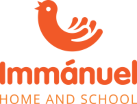Physical therapy
The Immanuel Home and Developmental Education School uses physical therapy as part of their daily curriculum. This includes special needs physical education, massotherapy, hydrotherapy, as well as conductive movement therapy, wheelchair course and special needs swimming class. After consulting with physiotherapists, the types and frequency of the therapies we use are determined by a rehabilitation physician according to the needs pf individual children. The therapies could be held either as individual or as group sessions of 30 or 45 minutes.
The goal of the therapy is to preserve and increase the range of motion (ROM) of joints, increase muscle strength, prevent and treat joint contractures, relieve developed spasms. Playfully improving cognitive processes and motor functions is also crucial, this is where conductive movement therapy can prove most effective.
Physical therapy includes the following:
- establishing a thorough and detailed physiotherapic assessment;
- creating a physiotherapic treatment plan;
- positioning (reflex-inhibiting postures);
- making passive movements;
- stretching, PNF (Proprioceptive Neuromuscular Facilitation);
- other manual techniques (Dorn-, Bowen-, Pfaffenrot methods);
- active exercises (with continuous manual or verbal facilitating and corrections)
- muscle strengthening (using various devices, e.g. theraband, fitball, ankle- and arm weights, balls, Motomed);
- practicing basic movements (turning, crawling, climbing, sitting, walking on all fours, kneeling, standing up, walking);
- developing neck-torso control (developing and correcting the physiological curvatures of the spine, preparing its vertical position);
- balancing and coordinating exercises;
- preparations for walking, walking exercises (with/without aids, e.g.: walking cane, frame with/without seat, etc.);
- vestibular stimulation, basal stimulation;
- manipulation skills development, eye-hand coordination;
Depending on the specialist and therapist recommendation, we give medical aids, so that we preserve the corrections we attained, for example: AFO (ankle foot orthosis), sitting chair, elbow splint, knee braces, etc. Most of these appliances are supported by the National Health Insurance Fund of Hungary (NEAK), and if appropriate, prescribable. All of these appliances are custom-made, based on a precisely planned and executed plaster casting. The orthopedic technicians attend to our institution every two weeks, and the order of the castings are determined according to predetermined priorities made by the team. Sometimes it is really hard to familiarize the children with their appliances, but this is where the parents, teachers and the care staff can take part to help.
We offer wheelchair practicing courses for the children to learn how to use it for driving, braking, crossing thresholds, as well as the rules of safe mobility.
As for the older children, we offer various sports to get them acquainted with, and if they are interested in them (since it is imperative to find such activities for themselves which they really like), we adapt those according to their abilities. Some of these are basketball, football, Boccia, badminton, swimming and running.
Hydrotherapy is a specialized form of treatment which uses a therapeutic tub and pleasantly warm water. The 30 minutes long session have two versions:
- using sage dissolved in the water, since it effectively relaxes muscles and relieves spasms, then passively stretching the joints.
- using water jets to increase circulation, then loosening the adherent tissues.
Massotherapy is another important complementary therapy, that can help loosening the adherent muscles, connective tissues and fasciae, as well as loosening myogelosis and harmonizing the whole body. During the massage, we use sage cream for muscle relaxation, as well as base (almond) oil mixed with essential oils. Besides the manual massage, we also use massage machines.

 Story
Story  Conservator
Conservator  Mission
Mission  Structure
Structure  Quality policy
Quality policy  Document library
Document library  Main documents
Main documents  Downloadable documents
Downloadable documents  Student practice
Student practice  Volunteering
Volunteering  Public education
Public education  Ability-based education
Ability-based education  Special education
Special education  Skill development school
Skill development school  Social care
Social care  Health/Rehabilitation Benefits
Health/Rehabilitation Benefits  Motion therapy
Motion therapy  AAK - Augmentative and Alternative Communication
AAK - Augmentative and Alternative Communication  "OS" Home Assistant Service
"OS" Home Assistant Service  Extracullicular programs
Extracullicular programs  Choir
Choir  Medicinal swimming
Medicinal swimming  Dog therapy
Dog therapy  Wheelchair study group
Wheelchair study group  Self-Defense study group
Self-Defense study group  About the Immanuel foundation
About the Immanuel foundation  Public benefit report
Public benefit report